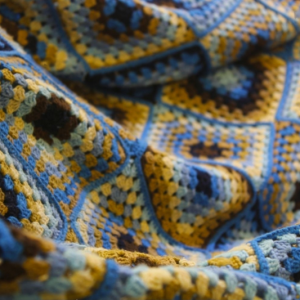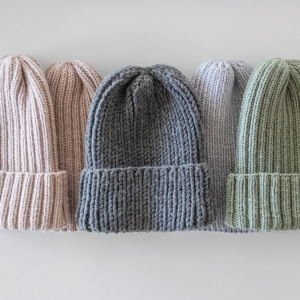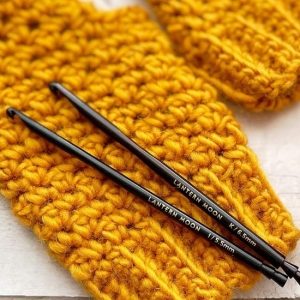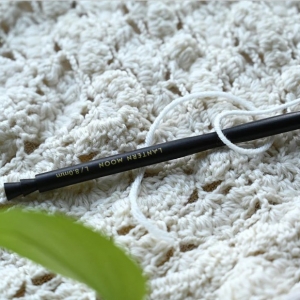Knitting is a beautiful hobby that has been around for thousands of years. Even though you’ll find modern technologies such as computerized machines, the fundamentals of knitting needles remain the same as they always have been. If you’ve just started to knit or are new to the hobby, you must have noticed that knitters and designers have a unique language of their own. The following sections explain some common knitting terminologies and abbreviations so you can decode what your next knitting pattern means and get to the fun part: Knitting!
The following section gives you a deeper dive into some basics of knitting techniques and abbreviations that you are likely to see in knitting patterns.
Knitting Dictionary
Row: A row of stitches; each row is a horizontal line of stitches.
Stitch(es): A stitch is a complete movement in and out of a loop.
Needle Gauge: This tiny tool is most commonly used in knitting to know the knitting needle sizes if don’t know what number of size needles you are working with or will work.
Gauge: A gauge is a measurement of stitch and row per inch. Knitters often swatch their fabric to ensure that stitches and rows will match the gauge specified in the pattern.
Stitch Markers: As the name suggests it is a tool to mark the beginning of the stitch so you won't lose any stitch.
Slip Knot: The first rule of knitting is casting the stitches with a slip knot. That is the first and foremost step in the knitting process.
Tension: The grip you have on your yarn, or how you hold it called a tension gauge.
Purl: When you knit the base its backside bumpy side refers to purl.
Bind off: Binding off is a technique where you secure your last stitch in an unfinished piece of knitting.
Blocking: It is the most critical part of knitting where you set the stitches of your project and gauge the garment. It can be done in various ways such as by wetting the garment or by spraying water on it or you can give it a heat treatment as well.
Popular Abbreviations of Knitting
CKN: It stands for circular knitting needles
Rnd(s): A round is a complete circumnavigation (that is a fancy word for a full circle) of stitches. One round is created by working in front and back loops of stitches on the previous round.
TBL: It stands for through the back loop. This is what you do when you insert the needle into the stitch through the back loop.
SPKN: Knitters use this abbreviation for single-pointed knitting needles
CO: This term refers to the casting on & off technique.
Yrn: The yarn around the knitting needle is commonly used as Yrn.
FCN: This type of knitting needle is a fixed circular needle.
ICN: Interchangeable circular needles are those where two separate knitting needles are attached with a cable but you can change the size of the cable as per your project need.
DPKN: Double-pointed knitting needles
PM: A place marker is a marker you place in the row to mark a point in knitting.
Inc: This abbreviation stands for increase, which is a method of making your project bigger by adding stitches.
Skp: Skp Stands for slip, knit, and pass( a slipped stitch over)- another way of decreasing.
W&T: It means wrap and turn, which is a technique for making a stitch marker, also known as a temporary stitch.
Dec & Inc: Dec stands for decrease and Inc means increase, it is a method of making the number of stitches in your work smaller or larger.
You no longer need to worry, as you must now be familiar with the common words that knitters use today. The mysteries of the knitting world will become clear once you master this seemingly difficult skill. If you have any other concerns related to do check out our other blogs at https://www.lanternmoon.com/blogs/blog-post.





